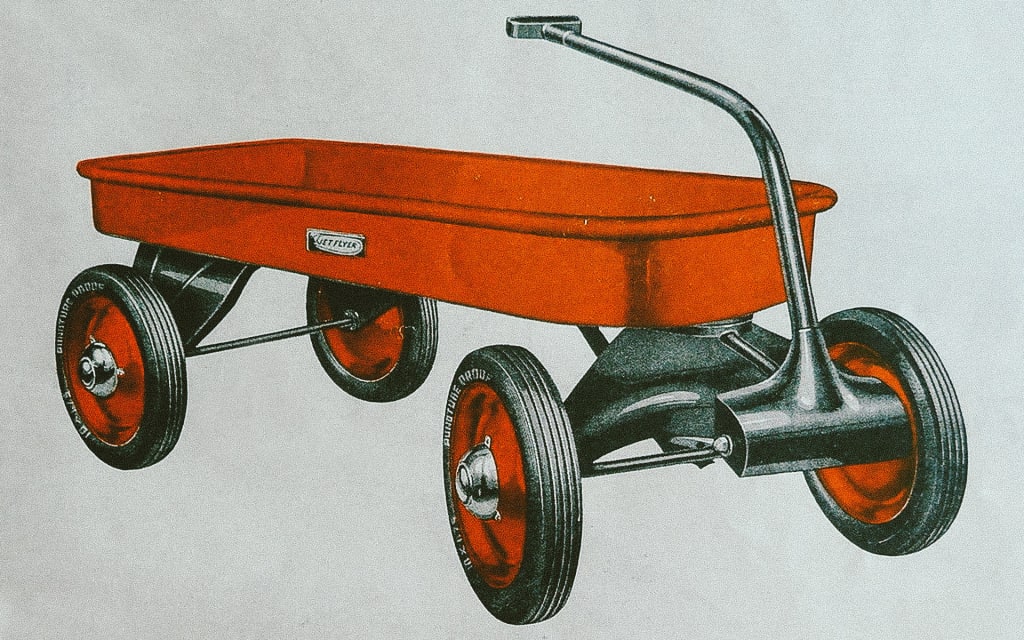Evolution of Children's Toys
From wooden dolls of all shapes and sizes to electronic entertainment systems, the evolution of children’s toys has continued to progress as the years have gone by.

It can be difficult to comprehend that there was even a time when toys were considered to be somewhat of a luxury item. In fact, prior to the 20th century, children had very few toy options available. The children from these early generations spent much of their time helping with simple household or outdoor chores. In those early times before there really ever was a legitimate children’s toy market; parents were forced to innovate their own objects for children to play with. Thus, some ancient cultures even resorted to using the remnants of animal carcasses to create balls, and many other entertaining objects like dice fashioned out of knuckle bones. As each century ran its course, toys continued to advance, and the evolution of children’s toys has progressed to a level that those previous generations could only have dreamt of.
Influential Toys Throughout History
People who take a nostalgic look at the evolution of children’s toys will inevitably see that there’s been many different influential toys throughout history. In the late 1800s, some of the most popular toys included balls and hoops made from a variety of different materials. The early 1900s would bring toy horses, dolls, pedal cars, and various playground equipment for children to enjoy. Back in 2011, Time Magazine chronicled the 100 most influential toys from 1923 to the present. There have been many great games and devices that kids have been playing with for decades.
Since it’s been featured in several major Hollywood films, regardless of what generation you may be from, just about everybody is familiar with the Radio Flyer Wagon. To say that this toy has stood the test of time would be an understatement. The very first Radio Flyer Wagons were manufactured in 1923 from stamped metal, rendering them nearly indestructible. The good news is that they are still being produced today in a variety of updated shapes and sizes for kids to still enjoy a toy that even their early ancestors were fond of.
Available today in an assortment of fun colors, shapes, and sizes, the yo-yo is said to have originated in either ancient China or Greece. This is yet another fundamental piece correlating to the evolution of children’s toys, because it was first used as a tool for hunting before eventually being developed into a children’s toy. The emergence of yo-yo contests around the world would eventually help the yo-yo achieve mainstream international success.
The finger painting system was first used as an educational medium in an effort to teach kids about art. The system was never about the finished product, but rather allowing kids to express themselves. Although its use today has diminished in the educational realm, it remained popular throughout the 1960s.
If you’ve seen the film A Christmas Story, then you are probably already aware of just how popular Red Ryder BB Guns are. The “toy” guns were introduced in 1938 and closely resembled the Winchester rifles as seen in countless Hollywood Western films of the era. One of the most influential toys throughout history, because getting a Red Ryder BB Gun as a kid is more about the right of passage than actually playing with.
If the the slogan/song for a simple object spans the better part of a century, then you know that the toy is influential. Some of the original commercials for Slinky are still being played on televisions around the world today. A little known fact about this desired toy is that it was accidentally discovered by a mechanical engineer named Richard James in the year 1943. Slinky would go on to become one of the most well known toys in history.
The evolution of children’s toys continued when some Yale University student started tossing around pie plates from Frisbie Baking Co and yelling out “Frisbie!” to warn those passing by of flying pie plates. Leagues and tournaments have since been dedicated to the toy.
Named after the creator’s daughter, if there ever was a toy to signify a right of passage for young girls, then it would have to be this three-dimensional, grownup fashion doll.
This innovative gadget was referred to as the “magic drawing toy.”
It’s not uncommon to see both kids and adults still being entertained by this toy today.
Created by a twenty-one-year-old art-school student, these dolls were popular in the mid-1980s.
Advertised as a high-power water gun that could spray water up to 50', it was nearly impossible to drive though a neighborhood during 90s and not see kids playing with these on a summer day.
Known as the anti-Barbies, the demand for these fashion dolls spiked after being released in 2001.
Technology Has Changed the Way Kids Play
So, just how much has the progression of modern technology changed the evolution of children’s toys? It would be difficult to debate that kids living in the 21st century definitely play differently than those from previous centuries. Perhaps this can be directly attributed to advances in technology, such as a rise in internet access, home video game systems, and even smart toys. For instance, the first dolls that kids were exposed to amounted to little more than inanimate objects that drew upon a children’s imaginations to promote fun. Today, dolls and many other toys boast their own intelligence software via infused electronics. A nationwide survey that was conducted in 2014 found that touchscreen devices beat out many traditional toys that have been around for decades in usage rate among children under twelve years old.
The evolution of children’s toys over the past several decades has been remarkable, and it will be interesting to see how technology continues to change this market in years to come.
About the Creator
Patricia Sarkar
Raised on a steady diet of makeup and games. Eager to share my experiences with the world and make a difference, article by article! :)






Comments
There are no comments for this story
Be the first to respond and start the conversation.